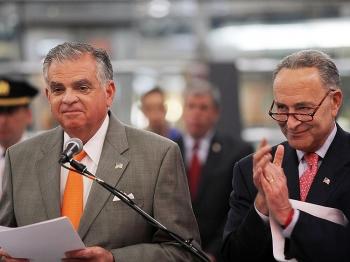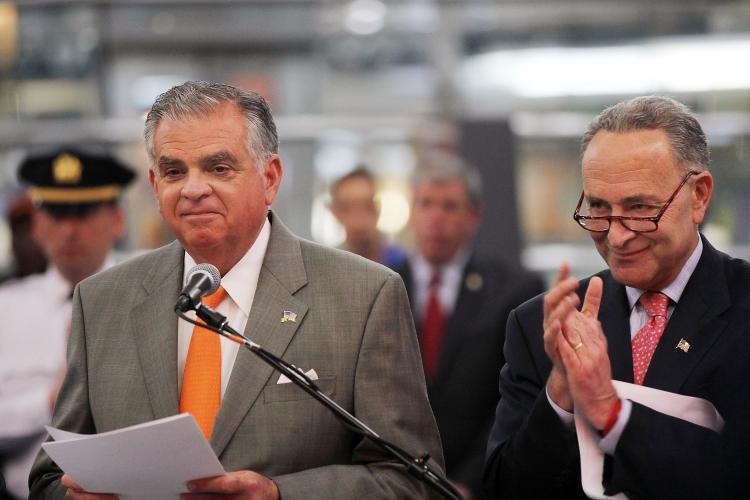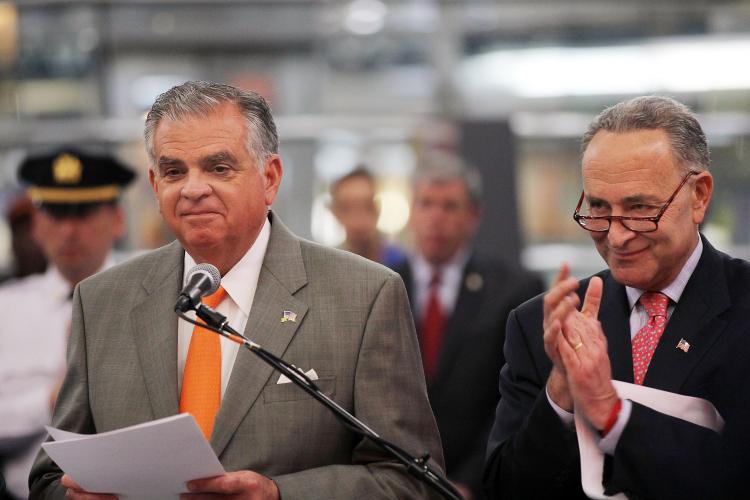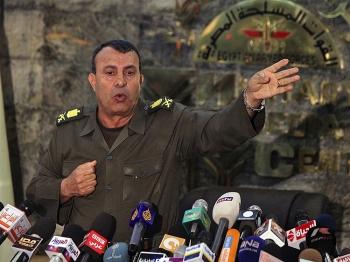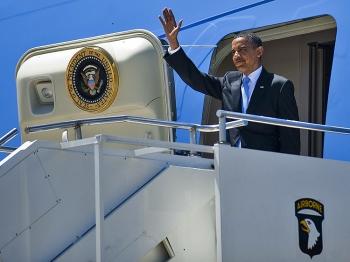Ray LaHood, the U.S. Transportation Secretary, announced $2 billion for high-speed rail, which will be a large investment in train transportation in America, according to a May 9 White House press release.
LaHood stated that, “Today we are advancing President Obama’s historic high-speed rail blueprint through 22 carefully selected projects that will create jobs, boost manufacturing, and spur development while laying the foundation for our future economic competitiveness.”
He continued, “We are providing two billion dollars to 15 states and Amtrak to help build out America’s high-speed rail network, enabling people and goods to travel more quickly, safely and energy-efficiently than ever before.”
To offer evidence that these projects will help America in various ways, LaHood said that, “Already, high-speed rail upgrades are employing workers laying 96 miles of track on the Chicago-St. Louis run. Workers in Maine are also laying track—welded in America--between Boston and Portland. And in Sacramento and San Jose, construction workers are building intermodal stations that will be home to California’s high-speed corridor.”
Further, LaHood confirmed that these projects would have “A strict “Buy America” requirement for high-speed rail projects,” which thereby “ensures that U.S. manufacturers and their workers will receive the maximum economic benefits from our investment.”
In light of increasing gas prices and a growing population, the rails are projected to help shuttle goods and people to and from places in a more energy-efficient way.
The investment is meant to reduce the need for gasoline, and to releive road congestion. LaHood noted, “By 2050, the United States will be home to 100 million additional people. That’s the equivalent of adding another California, Texas, New York, and Florida combined.”
He added, “Our transportation networks simply cannot accommodate that kind of growth, and if we settle for the status quo, our children and grandchildren will remain dependent on foreign oil and continue to suffer from ever-higher gas prices.”
As the press release reported, some of the rail projects’ highlights include:
New York – $295 million to lessen major train delays going in and out of Manhattan.
California Corridors – $68 million to obtain 15 high-performance passenger rail cars, along with 4 quick-acceleration locomotives for the Pacific Surfliner, San Joaquin, and Capitol Corridors.
Illinois – Chicago - St. Louis Corridor – $186.3 million to build upgrades on the Chicago - St. Louis Corridor between Dwight and Joliet, IL, aimed to reduce trip times, enhance safety and add more seats on the corridor.
LaHood stated that, “Today we are advancing President Obama’s historic high-speed rail blueprint through 22 carefully selected projects that will create jobs, boost manufacturing, and spur development while laying the foundation for our future economic competitiveness.”
He continued, “We are providing two billion dollars to 15 states and Amtrak to help build out America’s high-speed rail network, enabling people and goods to travel more quickly, safely and energy-efficiently than ever before.”
To offer evidence that these projects will help America in various ways, LaHood said that, “Already, high-speed rail upgrades are employing workers laying 96 miles of track on the Chicago-St. Louis run. Workers in Maine are also laying track—welded in America--between Boston and Portland. And in Sacramento and San Jose, construction workers are building intermodal stations that will be home to California’s high-speed corridor.”
Further, LaHood confirmed that these projects would have “A strict “Buy America” requirement for high-speed rail projects,” which thereby “ensures that U.S. manufacturers and their workers will receive the maximum economic benefits from our investment.”
In light of increasing gas prices and a growing population, the rails are projected to help shuttle goods and people to and from places in a more energy-efficient way.
The investment is meant to reduce the need for gasoline, and to releive road congestion. LaHood noted, “By 2050, the United States will be home to 100 million additional people. That’s the equivalent of adding another California, Texas, New York, and Florida combined.”
He added, “Our transportation networks simply cannot accommodate that kind of growth, and if we settle for the status quo, our children and grandchildren will remain dependent on foreign oil and continue to suffer from ever-higher gas prices.”
As the press release reported, some of the rail projects’ highlights include:
New York – $295 million to lessen major train delays going in and out of Manhattan.
California Corridors – $68 million to obtain 15 high-performance passenger rail cars, along with 4 quick-acceleration locomotives for the Pacific Surfliner, San Joaquin, and Capitol Corridors.
Illinois – Chicago - St. Louis Corridor – $186.3 million to build upgrades on the Chicago - St. Louis Corridor between Dwight and Joliet, IL, aimed to reduce trip times, enhance safety and add more seats on the corridor.
